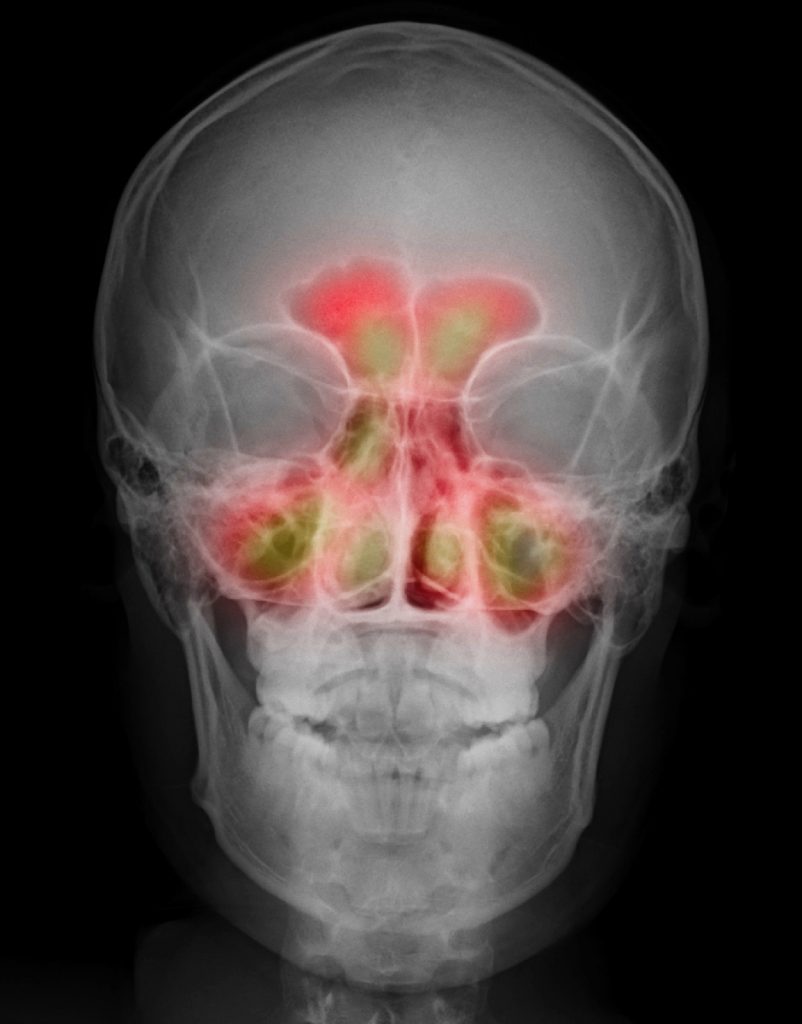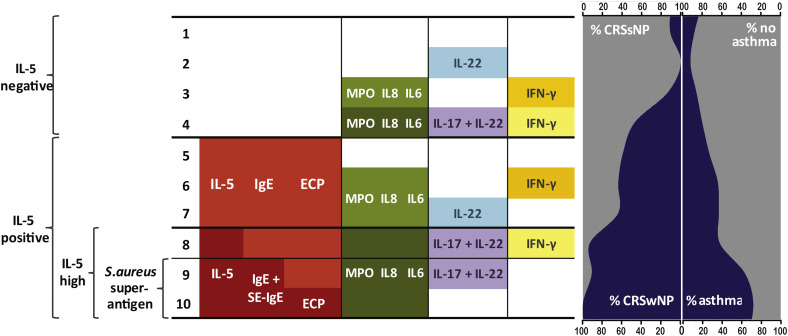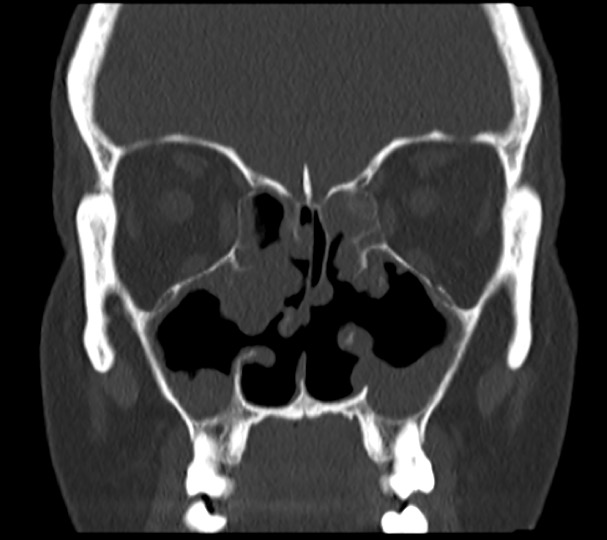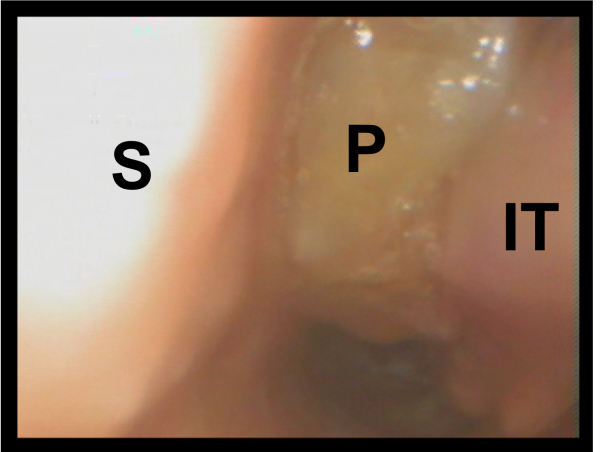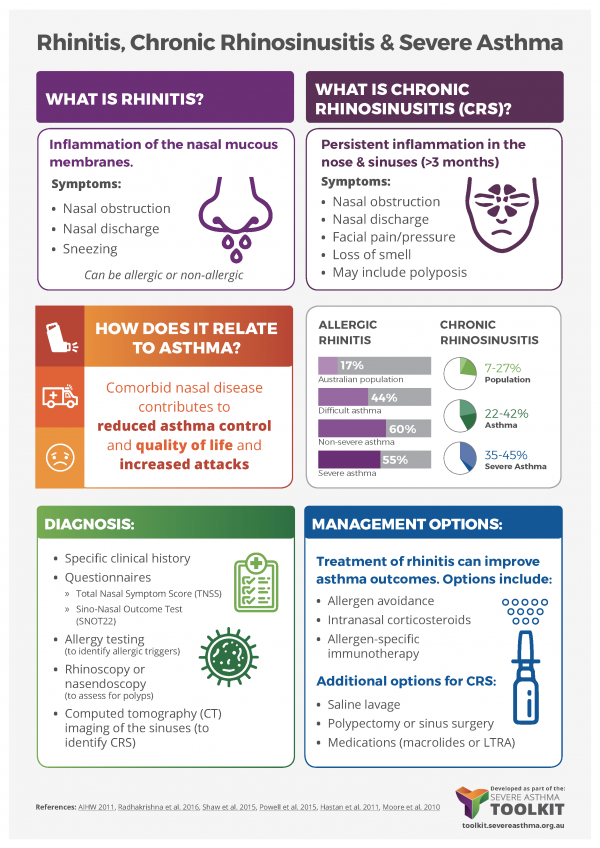Chronic rhinosinusitis is diagnosed when a patient reports 3 months of ≥ 2 of the following symptoms:
- Nasal obstruction
- Nasal discharge
- Facial pain/pressure
- Anosmia (loss of sense of smell)
In addition, there should be rhinoscopic or CT findings consistent with chronic rhinosinusitis.

